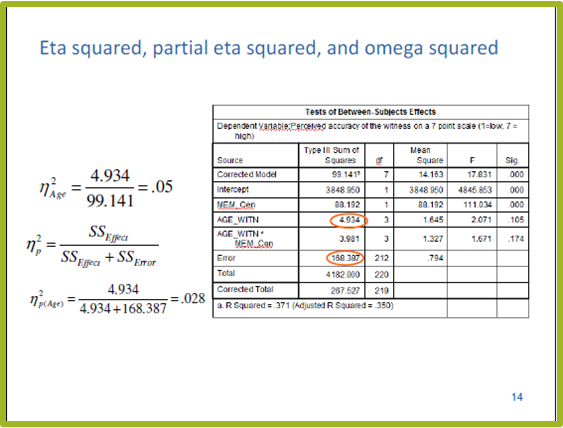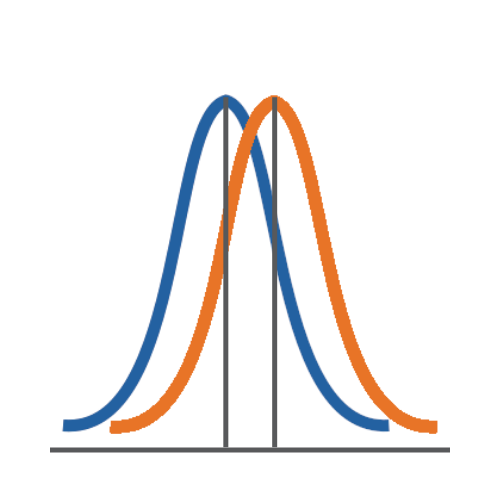the craft of statistical analysis free webinars
Effect Size Statistics

Effect Size Statistics are all the rage. Journal editors want to see them in every results section. You need them for performing sample size estimates (And editors want those too). But statistical software doesn’t always give you the effect sizes you need…learn more
statistically speaking trainings
An Overview of Effect Size Statistics
and Why They are So Important

Whenever we run an analysis of variance or run a regression one of the first things we do is look at the p-value of our predictor variables to determine whether they are statistically significant. learn more
Interpretation of Effect Size Statistics

Effect size statistics are required by most journals and committees these days — for good reason. They communicate just how big the effects are in your statistical results — something p-values can’t do. But they’re only useful if you can choose the most appropriate one and if you can interpret it. learn more
The Fundamentals of Sample Size Calculations

Sample size estimates are one of those data analysis tasks that look straightforward, but once you try to do one, make you want to bang your head against the computer in frustration. Regardless of how they make you feel, they are super important to do for your study before you collect the data. learn more
Power Analysis and Sample Size
Determination Using Simulation

Description text will be here. Lorim ipsum at sentros it arento. Lorim ipsum at sentros it arento. Subhead will be here. Lorim ipsum et…learn more
Meta-Analysis

Meta-analysis is the quantitative pooling of data from multiple studies. Meta-analysis done well has many strengths, including statistical power, precision in effect size estimates, and providing a summary of individual studies. learn more
Confidence Intervals

A Science News article from July 2014 was titled “Scientists’ grasp of confidence itnervals doesn’t inspire confidence.” Perhaps that is why only 11% of the articles in the 10 leading psychology journals in 2006 reported confidence intervals in their statistical analysis. learn more
Equivalence Tests and Non-Inferiority

Statistics is, to a large extent, a science of comparison. You are trying to test whether one group is bigger, faster, or smarter than another. learn more
Inference and p-values and
Statistical Significance, Oh My!

Statistical inference using hypothesis testing is ubiquitous in science. Several misconceptions and misinterpretations of p-values have arisen over the years, which can lead to challenges communicating the correct interpretation of results. learn more
blog articles
power and sample size calculations
5 Steps for Calculating Sample Size

Nearly all granting agencies require an estimate of an adequate sample size to detect the effects hypothesized in the study. But all studies are well served by estimates of sample size, as it can save a great deal on resources. learn more
5 Ways to Increase Power in a Study

To increase power, you increase alpha, conduct a one-tailed test, increase the effect size, decrease random error, and increase sample size. Sound so simple, right? learn more
The Effect Size: The Most Difficult Step in
Calculating Sample Size Estimates

One of the most difficult steps in calculating sample size estimates is determining the smallest scientifically meaningful effect size. learn more
Sample Size Estimation Without
Past Reliable Pilot Data or Evidence

Here’s a common situation. Your grant application or committee requires sample size estimates. It’s not the calculations that are hard (though they can be), it’s getting the information to fill into the calculations. learn more
Three Issues in Sample Size
Estimates for Multilevel Models

If you’ve ever worked with multilevel models, you know that they are an extension of linear models. For a researcher learning them, this is both good and bad news. The good side is that many of the concepts, calculations, and results are familiar. The down side of the extension is that everything is more complicated in multilevel models. learn more
Sample Size Estimates for
Multilevel Randomized Trials

If you learned much about calculating power or sample sizes in your statistics classes, chances are, it was on something very, very simple, like a z-test. But there are many design issues that affect power in a study that go way beyond a z-test. learn more
5 Reasons to Run Sample Size
Calculations Before Collecting Data

Most of us run sample size calculations when a granting agency or committee requires it. That’s reason 1. That is a very good reason. But there are others, and it can be helpful to keep these in mind when you’re tempted to skip this step or are grumbling through the calculations you’re required to do. learn more
effect size statistics
How to Calculate Effect Size Statistics

There are many effect size statistics for ANOVA and regression, and as you may have noticed, journal editors are now requiring you include one. Unfortunately, the one your editor wants or is the one most appropriate to your research may not be the one your software makes available. learn more
Two Types of Effect Size Statistic:
Standardized and Unstandardized

Effect size statistics are all the rage these days. Journal editors are demanding them. Committees won’t pass dissertations without them. But the reason to compute them is not just that someone wants them — they can truly help you understand your data analysis. learn more
Effect Size Statistics: How to Calculate the Odds
Ratio from a Chi-Square Cross-tabulation Table

Lest you believe that odds ratios are merely the domain of logistic regression, I’m here to tell you it’s not true. One of the simplest ways to calculate an odds ratio is from a cross tabulation table. We usually analyze these tables with a categorical statistical test. There are a few options, depending on the sample size and the design. learn more

